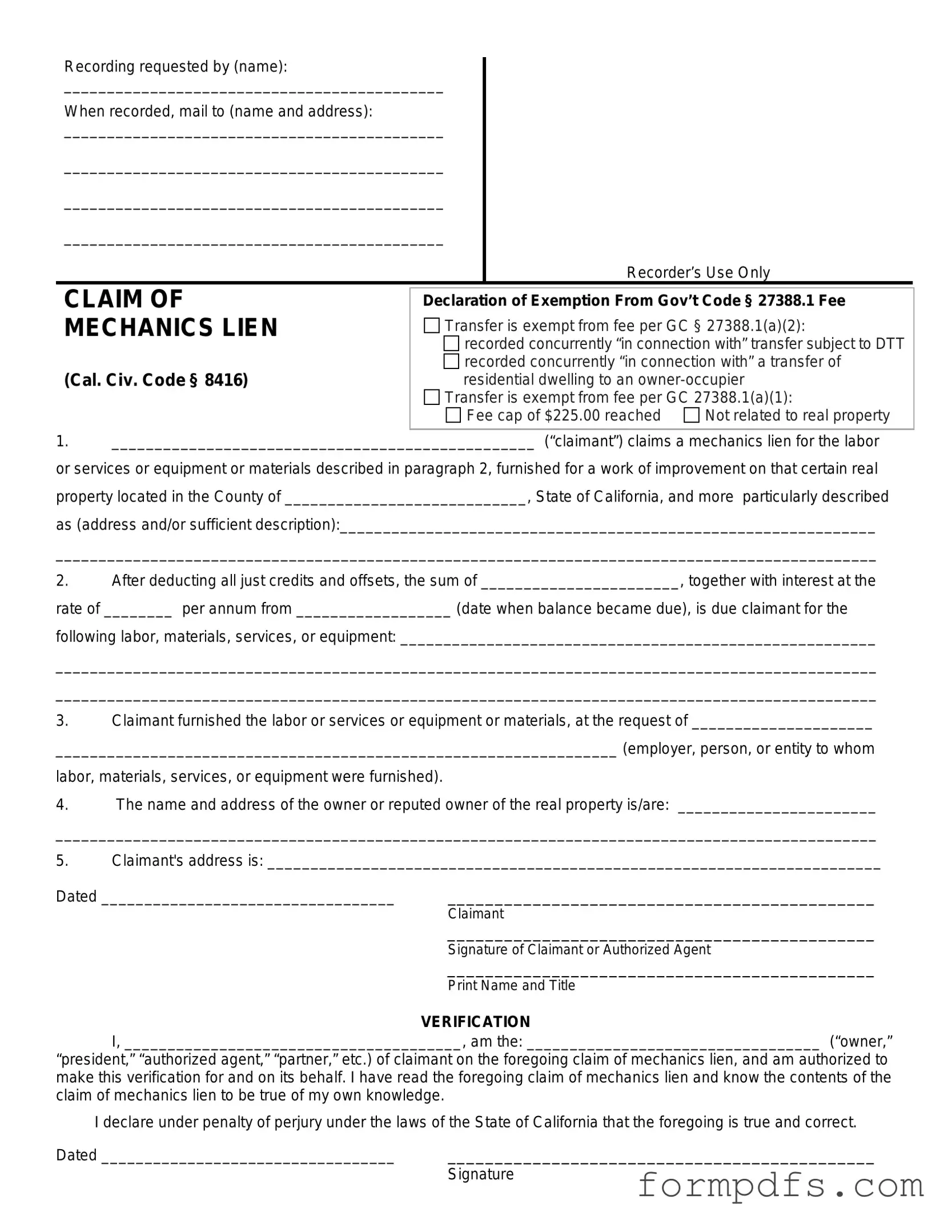What is a Mechanics Lien in California?
A Mechanics Lien is a legal claim against a property that ensures payment for labor or materials provided during construction or improvement of that property. In California, this lien protects contractors, subcontractors, and suppliers who have not been paid for their work. It allows them to seek payment by placing a lien on the property itself, which can complicate the sale or refinancing of that property until the debt is settled.
Who can file a Mechanics Lien in California?
In California, various parties can file a Mechanics Lien. This includes general contractors, subcontractors, suppliers, and laborers who have contributed to the construction or improvement of a property. Even if you are not in direct contract with the property owner, you may still have the right to file a lien if you provided materials or services.
What are the requirements for filing a Mechanics Lien?
To file a Mechanics Lien in California, certain requirements must be met. First, you must have provided labor or materials for the property. Next, you must file the lien within 90 days of completing your work. The lien must be in writing and include specific information, such as the property owner’s name, a description of the work done, and the amount owed. Additionally, you must serve a copy of the lien to the property owner.
How do I file a Mechanics Lien?
Filing a Mechanics Lien involves several steps. Begin by preparing the lien document with all necessary details. After that, you must file the lien with the county recorder's office in the county where the property is located. Be sure to pay any required filing fees. Finally, serve a copy of the filed lien to the property owner, which can typically be done via certified mail or personal delivery.
What happens after I file a Mechanics Lien?
Once you file a Mechanics Lien, the property owner is notified of your claim. This can prompt the owner to settle the debt to clear the lien. If the debt remains unpaid, you may need to take further legal action to enforce the lien. This often involves filing a lawsuit within a specific time frame, typically within 90 days after the lien is filed, to convert the lien into a judgment.
Can a Mechanics Lien be removed?
Yes, a Mechanics Lien can be removed. The most common way to do this is by paying the debt owed. Once payment is made, the lien claimant must file a lien release with the county recorder's office. Additionally, if the lien is found to be invalid or if the claimant fails to take further legal action within the required time frame, it may be removed through court proceedings.
What are the consequences of not filing a Mechanics Lien on time?
If you do not file a Mechanics Lien within the required 90-day period after completing your work, you may lose your right to claim payment through a lien. This means you would need to pursue other methods of collection, which could be more complicated and less secure than having a lien against the property. Timeliness is crucial in protecting your rights as a contractor or supplier.
